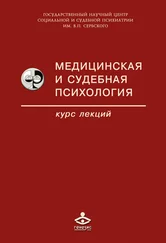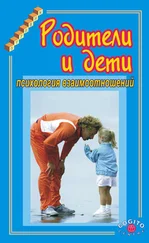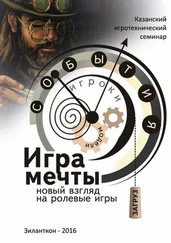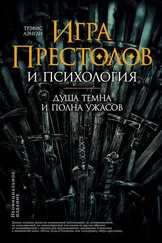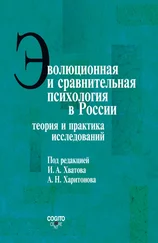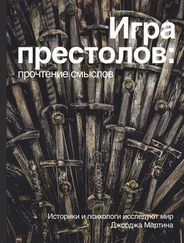Эпизод 2–7 «Человек без чести» (13 мая 2012 г.).
Хорни К. Невротическая личность нашего времени. — М.: Академический проект, 2009;
Sayers, J. (1991). Mothers of psychoanalysis: Helen Deutsch, Karen Horney, Anna Freud, Melanie Klein. New York, NY: Norton.
Фрейд З. Основные принципы психоанализа [сборник работ]. — М.; Киев: Рефл-бук, Ваклер, 1998.
Rhodes, G. K., Stanley, S. M., & Markman, H. J. (2010). Should I stay or should I go? Predicting dating relationship stability from four aspects of commitment. Journal of Family Psychology , 24 (5), 543–550;
Sternberg, R. (1986). A triangular theory of love. Psychological Review , 93 (2), 119–135. Sternberg, R. (1997). Construct validation of a triangular love scale. European Journal of Social Psychology , 27 (3), 313–335.
Sternberg, R. (1986). A triangular theory of love. Psychological Review , 93 (2), 119–135.
Sternberg, R. (1997). Construct validation of a triangular love scale. European Journal of Social Psychology , 27 (3), 313–335.
Acevedo, B. P., & Aron, A. (2009). Does long-term relationship kill romantic love? Review of General Psychology , 13 (1), 59–65; Kim, J., & Hatfield, E. (2004). Love types and subjective well-being: A cross-cultural study. Social Behavior and Personality , 32 (2), 173–182; Sternberg, R. (1988). The triangle of love: Intimacy, passion, commitment. New York, NY: Basic.
Мартин Дж. Танец с драконами. — М.: АСТ, 2013.
Франкл В. Человек в поисках смысла. — М.: Прогресс, 1990.
Hobfoll, S. E., Hall, B. J., Canetti-Nisim, D., Galea, S., Johnson, R. J., & Palmieri, P. A. (2007). Refining our understanding of traumatic growth in the face of terrorism: Moving from meaning cognitions to doing what is meaningful. Applied Psychology , 56 (3), 345–366.
Rajandram, R. K., Jenewein, J., McGrath, C., & Zwahlen, R. A. (2011). Coping processes relevant to posttraumatic growth: An evidence-based review. Supportive Care in Cancer , 19 (5), 583–589.
Woodward, C., & Joseph, S. (2003). Positive change processes and post-traumatic growth in people who have experienced childhood abuse: Understanding vehicles of change. Psychology and Psychotherapy , 76 (3), 267–283.
Эпизод 3-10 «Мать» (9 июня 2013 г.).
Эпизод 1–1 «Зима близко» (17 апреля 2011 г.).
Dekel, S., Mandl, C., & Solomon, Z. (2011). Shared and unique predictors of post-traumatic growth and distress. Journal of Clinical Psychology , 67 (3), 241–252.
Barrington, A. J., & Shakespeare-Finch, J. (2012). Working with refugee survivors of torture and trauma: An opportunity for vicarious post-traumatic growth. Counselling Psychology Quarterly , 26 (1), 89–105.
McElheran, M., Briscoe-Smith, A., Khaylis, A., Westrup, D., Hayward, C., & GoreFelton, C. (2012). A conceptual model of post-traumatic growth among children and adolescents in the aftermath of sexual abuse. Counselling Psychology Quarterly , 25 (1), 73–82.
Там же.
Lichtenthal, W. G., Currier, J. M., Neimeyer, R. A., & Keesee, N. J. (2010). Sense and significance: A mixed methods examination of meaning making after the loss of one's child. Journal of Clinical Psychology , 66 (7), 791–812.
Эпизод 2-10 «Валар Моргулис» (3 июня 2012 г.).
Rajandram, R. K., Jenewein, J., McGrath, C., & Zwahlen, R. A. (2011). Coping processes relevant to posttraumatic growth: An evidence-based review. Supportive Care in Cancer , 19 (5), 583–589.
Lichtenthal, W. G., Currier, J. M., Neimeyer, R. A., & Keesee, N. J. (2010). Sense and significance: A mixed methods examination of meaning making after the loss of one's child. Journal of Clinical Psychology , 66 (7), 791–812.
Joseph, S., Murphy, D., & Regel, S. (2012). An affective-cognitive processing model of post-traumatic growth. Clinical Psychology and Psychotherapy , 19 (4), 316–325.
Эпизод 1–9 «Бейелор» (12 июня 2011 г.).
Joseph, S., Murphy, D., & Regel, S. (2012). An affective-cognitive processing model of post-traumatic growth. Clinical Psychology and Psychotherapy , 19 (4), 316–325.
Эпизод 1–4 «Калеки, бастарды и сломанные вещи» (8 мая 2011 г.).
Lichtenthal, W. G., Currier, J. M., Neimeyer, R. A., & Keesee, N. J. (2010). Sense and significance: A mixed methods examination of meaning making after the loss of one's child. Journal of Clinical Psychology , 66 (7), 791–812.
Woodward, C., & Joseph, S. (2003). Positive change processes and post-traumatic growth in people who have experienced childhood abuse: Understanding vehicles of change. Psychology and Psychotherapy , 76 (3), 267–283.
Dekel, S., Mandl, C., & Solomon, Z. (2011). Shared and unique predictors of post-traumatic growth and distress. Journal of Clinical Psychology , 67 (3), 241–252.
Shakespeare-Finch, J., & Barrington, A. (2012). Behavioural changes add validity to the construct of posttraumatic growth. Journal of Traumatic Stress , 25 (2), 433–439.
Hobfoll, S. E., Hall, B. J., Canetti-Nisim, D., Galea, S., Johnson, R. J., & Palmieri, P. A. (2007). Refining our understanding of traumatic growth in the face of terrorism: Moving from meaning cognitions to doing what is meaningful. Applied Psychology , 56 (3), 345–366.
Barrington, A. J., & Shakespeare-Finch, J. (2012). Working with refugee survivors of torture and trauma: An opportunity for vicarious post-traumatic growth. Counselling Psychology Quarterly , 26 (1), 89–105.
Sherrer, H. (Interviewer), & Zimbardo, P. (Interviewee). (2003). Professor Philip Zimbardo: The interview [interview transcript]: http://forejustice.org/zimbardo/p_zimbardo_interview.htm.
Glaser, D. (2000). Child abuse and neglect and the brain — a review. Journal of Child Psychology and Psychiatry , 41 (1), 97–116.
Park, C. L., & Ai, A. L. (2006). Meaning making and growth: New directions for research on survivors of trauma. Journal of Loss and Trauma , 11 (5), 389–407.
Franco, Z. E., Blau, K., & Zimbardo, P. G. (2011). Heroism: A conceptual analysis and differentiation between heroic action and altruism. Review of General Psychology , 15 (2), 99.
Читать дальше
Конец ознакомительного отрывка
Купить книгу

